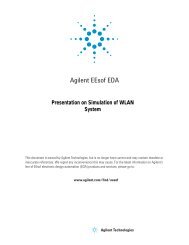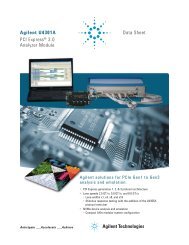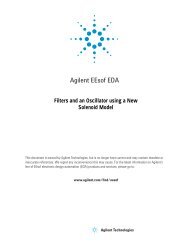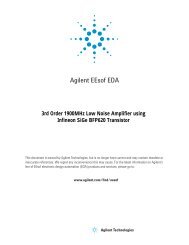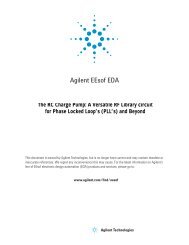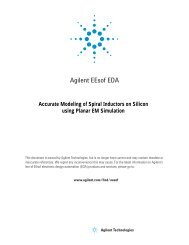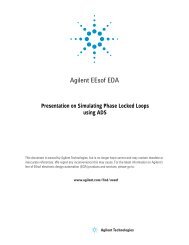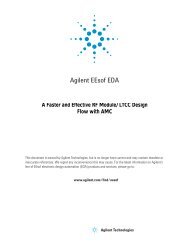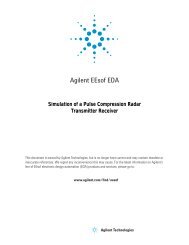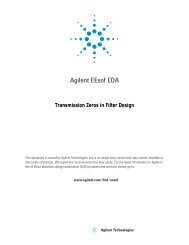Agilent 34980A Multifunction Switch/Measure Unit *34980-90005*
Agilent 34980A Multifunction Switch/Measure Unit *34980-90005*
Agilent 34980A Multifunction Switch/Measure Unit *34980-90005*
Create successful ePaper yourself
Turn your PDF publications into a flip-book with our unique Google optimized e-Paper software.
3 Features and Functions<br />
The following table shows the different combinations of front- panel<br />
annunciators that may appear while using alarms. In addition to being<br />
stored in reading memory, alarms are also recorded in their own SCPI<br />
status system. You can configure the instrument to use the status<br />
system to generate a Service Request (SRQ) when alarms are generated.<br />
Refer to the <strong>Agilent</strong> <strong>34980A</strong> Programmer’s Reference Help file for more<br />
information on the Status System.<br />
An alarm is enabled on the displayed channel.<br />
The indicated HI or LO limit is being configured on the indicated alarm<br />
(shown while in the Alarm menu).<br />
An alarm has occurred on one or more channels. The behavior of the <br />
Alarm Output lines tracks the alarm annunciators on the front panel.<br />
The Alarm Output lines have been cleared but alarms remain in the queue.<br />
The default values for the upper and lower alarm limits are “0”. <br />
The lower limit must always be less than or equal to the upper limit,<br />
even if you are using only one of the limits.<br />
For details on configuring alarms on the digital modules, see “Using<br />
Alarms With the Digital Modules” on page 138.<br />
A Factory Reset (*RST command) clears all alarm limits and turns off<br />
all alarms. An Instrument Preset (SYSTem:PRESet command) or <br />
Card Reset (SYSTem:CPON command) does not clear the alarm limits and<br />
does not turn off alarms.<br />
Front Panel Operation: Alarm > LOW LIMIT > HIGH LIMIT > THIS CHANNEL ALARM<br />
After selecting the lower and upper limit for the selected channel, assign<br />
one of the four alarm numbers. Note that the instrument does not start<br />
evaluating the alarm conditions until you exit the Alarm menu.<br />
Remote Interface Operation: To assign the alarm number to report any<br />
alarm conditions on the specified channels, use the following command <br />
(if not assigned, all alarms on all channels are reported on Alarm 1 <br />
by default).<br />
OUTPUT:ALARM2:SOURCE (@2001,2012)<br />
To set the upper and lower alarm limits on the specified channels, <br />
use the following commands.<br />
CALC:LIMIT:UPPER 5.25,(@2001,2012)<br />
CALC:LIMIT:LOWER 0.025,(@2001,2012)<br />
To enable the upper and lower alarm limits on the specified channels, <br />
use the following commands.<br />
CALC:LIMIT:UPPER:STATE ON,(@2001,2012)<br />
CALC:LIMIT:LOWER:STATE ON,(@2001,2012)<br />
134 <strong>Agilent</strong> <strong>34980A</strong> Mainframe User’s Guide





